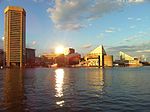USS Torsk

USS Torsk, hull number SS-423, is a Tench-class submarine built for the United States Navy during World War II. Armed with ten torpedo tubes, the Tench-class submarines were incremental developments of the highly-successful Gato-class submarines that formed the backbone of the US Navy's submarine force during the war. Torsk was laid down at the Portsmouth Navy Yard in June 1944, was launched in September that year, and commissioned in December. In 1945, Torsk made two war patrols off Japan, sinking one cargo vessel and two coastal defense frigates. The latter of these, torpedoed on 14 August 1945, was the last enemy ship sunk by the United States Navy in World War II. Throughout the 1950s and 1960s, she operated primarily as a training vessel; she also went on deployments to the Mediterranean Sea and helped to train elements of the Atlantic Fleet in anti-submarine tactics. Decommissioned in 1964, she served for another seven years as a training vessel for the Naval Reserve. She was stricken from the Naval Vessel Register in December 1971 and turned over to the state of Maryland for use as a museum ship. She is now part of the fleet of Historic Ships in Baltimore.
Excerpt from the Wikipedia article USS Torsk (License: CC BY-SA 3.0, Authors, Images).USS Torsk
Baltimore
Geographical coordinates (GPS) Address Website External links Nearby Places Show on map
Geographical coordinates (GPS)
| Latitude | Longitude |
|---|---|
| N 39.285055555556 ° | E -76.608722222222 ° |
Address
USS Torsk
21202 Baltimore
Maryland, United States
Open on Google Maps









